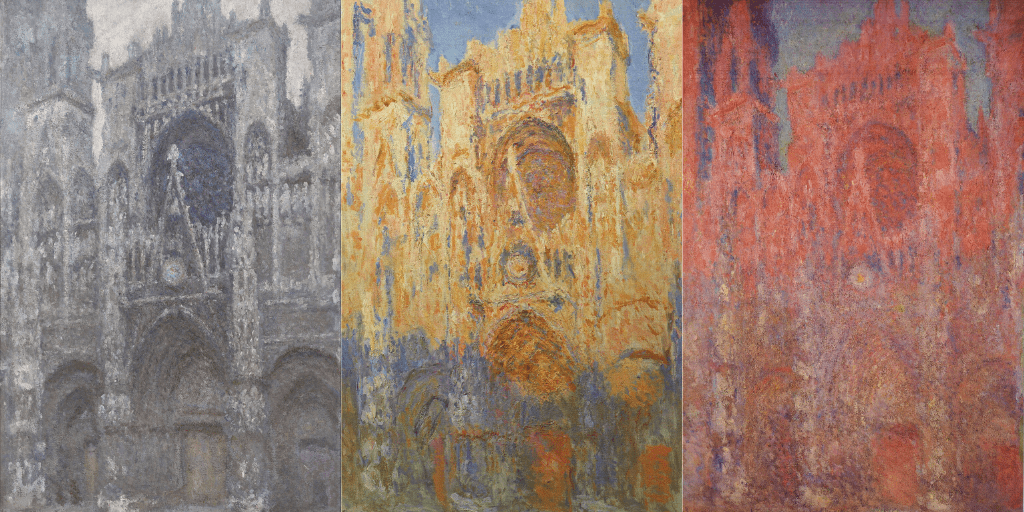We’re still close to the beginning of a new year and decade, and as always, beginnings are invitations. So it is with the Christian year. Advent leads to Christmas which in turn becomes Epiphany. Later in the year we enter into Lent, Easter, and Pentecost. We conclude with ordinary time. It is the annual rhythm of the church. We experience this rhythm in community with family, friends, church, and work.
Advent, Christmas, and Epiphany issue an invitation to us. To some the invitation is to begin something new. How many of us made resolutions to eat less sugar or to exercise more? The first few weeks of the church year are an invitation into a deeper relationship with Jesus for each of us.
The church facilitates this relationship through the practice of the Daily Office. The Daily Office is simply this: a simple structure of prayer and scripture engagement at several set times of the day. Others call it “fixed hour prayer”.
For me, I began praying a Daily Office when, with the help of my spiritual director, I discovered that morning quiet time was not moving me well into the day. This recognition itself was an invitation from the Lord to a different way of relationship with him, and I was quite surprised to realize that Jesus wanted a whole-day relationship. As a result of it I have become aware of my desire for solitude and silence; study and spiritual reading; personal, intercessory, and corporate prayer. I also became more aware of those desires that are not of God.

Fr. Bernard Bonowitz, OCSO, in Truly Seeking God, introduces his discussion of the Daily Office by an analogy to Monet’s paintings of the Cathedral at Rouen. In this series of paintings the subject was always the same cathedral. But, as Monet captured the movement of light during the day, the effect created a new cathedral. In a similar way, the Divine Light, Christ, by connecting with us in prayer throughout the day illuminates us and creates something new in or through us. Then, day after day, each new day is a resurrection to new life and possibilities from the rest of the preceding day (Bonowitz, p. 11-15). And so we pray in the morning in the Collect for the Renewal of Life:
O God, the King eternal, whose light divides the day from the night and turns the shadow of death into the morning: Drive far from us all wrong desires, incline our hearts to keep your law, and guide our feet into the way of peace; that, having done your will with cheerfulness during the day, we may, when night comes, rejoice to give you thanks; through Jesus Christ our Lord. Amen. (BCP 1979)
Being in relationship with Jesus throughout the day results in him shining his light on us in the midst of the daily realities of our lives. The more one is aware of the inner-self the more one knows the ways the Holy Spirit is guiding in the present moment, sustaining our awareness that we are indeed “in Christ,” giving us confidence, and therefore enabling courage so that we can know that “all is well, all shall be well, all manner of things shall be well” (Julian of Norwich).
In the deep hours of the night, when the monastic community prays Vigils, the Divine Light is seen not by the eye but by a perceiving of the heart. We too, upon waking in the night can invite Jesus in and allow our heart to perceive him. At dawn, a new day of promise is before us. We give God thanks and praise as we look forward with anticipation to a day spent in relationship with Jesus and in love and service to our neighbors, punctuated with intentional moments of turning to him for strength, guidance, and protection. In the evening as we come to the setting of the sun we look back on our day and praise God: Father, Son, and Holy Spirit, who is worthy of our praise at all times (Phos hilaron BCP). We confess our sins and seek God’s mercy and forgiveness and then turn our attention to the evening and matters needed to draw the day to a close. Finally, we conclude with Compline by which we seek the Lord’s presence, protection, and peace throughout the night. And then we entrust our spirit into his hands.
The Daily Office changes by the days and seasons of the church year according to the lectionary, bringing the different Scriptures and Psalms to us for prayer and meditation with the Holy Spirit. We too encounter different facets of Jesus as we engage the Word through the year. We grow in these opportunities for praise and adoration, Examine and confession, prayer and petition.
As each of us is unique, our form of praying (while similar) will also be unique as we deepen our relationships with God. One can pray a complete office (Book of Common Prayer), but, daily devotions for individuals and families (also in the Book of Common Prayer) is a much shorter form and is more accessible to most. While engaging in this dance is life-giving, its challenges are important to recognize. Counting successes and failures is legalism. I know. I tried it and so reported to my spiritual director. He didn’t stop laughing until I finally realized that the joke was on me. Be gentle with yourself. Do what you can, not what you can’t.
Growth comes by paying attention to both the promptings of the Holy Spirit and one’s resistance to those promptings. If, for example, you find yourself begging off because there is not enough time, you might ask God about that. Might this be an invitation to let go of something? Do you find yourself in constant motion and activity? Might the recognition of this be an invitation to silence somewhere? Do you keep confessing the same sins? Might this be an invitation to address them more directly? Are you refusing to meet God? What’s that about?
Framing one’s relationship with God through a daily office allows one to experience a life without lack, as Dallas Willard says, where the Lord is my Shepherd, I shall not want … (Psalm 23). It is a way of living life from the Center. This way of living “takes no time, but it occupies all our time.” (Thomas Kelly, p. 78.) It brings one face-to-face with Jesus: What do you seek? Come and see. (John 1:35-42)
Some sources:
- Book of Common Prayer (1979). There are various versions throughout the Anglican Communion.
- Fr. Bernard Bonowitz, OCSO, Truly Seeking God, https://www.amazon.com/Truly-Seeking-God-Monastic-Wisdom/dp/0879072628/ref=sr_1_fkmr0_1?keywords=liturgical+press+bonowitz&qid=1578843432&s=books&sr=1-1-fkmr0, 2019.
- Drs. Beth Harris and Steven Zucker, “Monet, Rouen Cathedral Series”, https://www.khanacademy.org/humanities/becoming-modern/avant-garde-france/impressionism/v/monet-rouen-cathedral-series-1892-4.
- Thomas R. Kelly, A Testament of Devotion, https://www.amazon.com/Testament-Devotion-Thomas-R-Kelly/dp/0060643617, first published in 1941.
- Dallas Willard, Life Without Lack, https://www.amazon.com/dp/B072TLK1N6/ref=dp-kindle-redirect?_encoding=UTF8&btkr=1, 2018 by Williard Family Trust.
If you are interested in learning more about spiritual direction or finding a director who can help you on your own spiritual journey, please visit our Spiritual Direction page.
